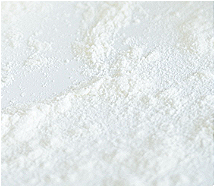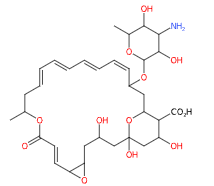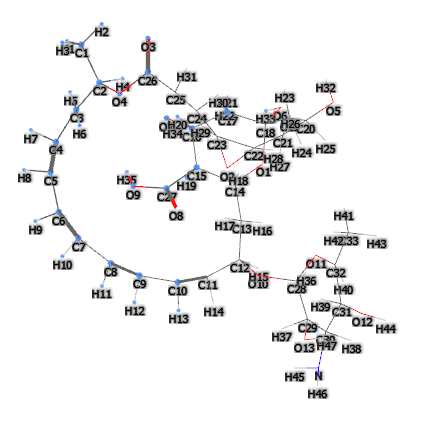| "Descrizione" by Whiz35 (11840 pt) | 2023-Apr-07 19:34 |
Review Consensus: 10 Rating: 10 Number of users: 1
| Evaluation | N. Experts | Evaluation | N. Experts |
|---|---|---|---|
| 1 | 6 | ||
| 2 | 7 | ||
| 3 | 8 | ||
| 4 | 9 | ||
| 5 | 10 |
E235 (Natamycin) is a natural polyene tetraene antimicrobial peptide that is obtained during the fermentation of strains of the Gram-positive bacterium Streptomyces natalensis found in soil.
It appears in the form of a white powder.

What it is used for and where
Medical
It is an antifungal used in many diseases such as fungal keratitis that can develop into infectious keratitis (1)
Food
It has the function of preventing fungal growth at low pH, low humidity and low temperature in food products. However, it is incompatible with peroxyacetic acid, resulting in reduced effectiveness against green mould (2).
Ingredient listed in the European food additives list as E235, preservative.
Cosmetics
It is an ingredient used as an antimicrobial and antifungal.
Antimicrobial agent. This ingredient is able to suppress or inhibit the growth and replication of a broad spectrum of microorganisms such as bacteria, fungi and viruses by making the stratum corneum temporarily bactericidal and fungicidal.
Preservative. Any product containing organic, inorganic compounds, water, needs to be preserved from microbial contamination. Preservatives act against the development of harmful microorganisms and against oxidation of the product.
 |  |
Molecular Formula C33H47O13N C33H47NO13
Molecular Weight 665.7
CAS 7681-93-8
UNII 8O0C852CPO
EC Number 231-683-5
DSSTox ID
IUPAC (1R,3S,5R,7R,8E,12R,14E,16E,18E,20E,22R,24S,25R,26S)-22-[(2R,3S,4S,5S,6R)-4-amino-3,5-dihydroxy-6-methyloxan-2-yl]oxy-1,3,26-trihydroxy-12-methyl-10-oxo-6,11,28-trioxatricyclo[22.3.1.05,7]octacosa-8,14,16,18,20-pentaene-25-carboxylic acid
InChl=1S/C33H47NO13/c1-18-10-8-6-4-3-5-7-9-11-21(45-32-30(39)28(34)29(38)19(2)44-32)15-25-27(31(40)41)22(36)17-33(42,47-25)16-20(35)14-24-23(46-24)12-13-26(37)43-18/h3-9,11-13,18-25,27-30,32,35-36,38-39,42H,10,14-17,34H2,1-2H3,(H,40,41)/b4-3+,7-5+,8-6+,11-9+,13-12+/t18-,19-,20+,21+,22+,23-,24-,25+,27-,28+,29-,30+,32+,33-/m1/s1
InChl Key NCXMLFZGDNKEPB-FFPOYIOWSA-N
SMILES CC1CC=CC=CC=CC=CC(CC2C(C(CC(O2)(CC(CC3C(O3)C=CC(=O)O1)O)O)O)C(=O)O)OC4C(C(C(C(O4)C)O)N)O
MDL number MFCD00135085
PubChem Substance ID 329754196
RTECS TK3325000
NCI C47634
RXCUI 7268
Metabolomics Workbench 98963
Synonyms:
- Pimaricin
- delvocid
- antibiotic A 5283
- mycophyt
- delvopos
- Synogil
References_________________________________________________________________________
(1) Prajna NV, Radhakrishnan N. Intrastromal natamycin: A well-aimed arrow in a difficult battle. Indian J Ophthalmol. 2021 Oct;69(10):2565. doi: 10.4103/ijo.IJO_775_21.
(2) Chen D, Förster H, Nguyen K, Adaskaveg JE. Organic Acid Sanitizers for Natamycin and Other Fungicides in Recirculating Application Systems for Citrus Postharvest Decay Management. Plant Dis. 2021 Oct;105(10):2907-2913. doi: 10.1094/PDIS-01-21-0227-RE.
| Evaluate |

